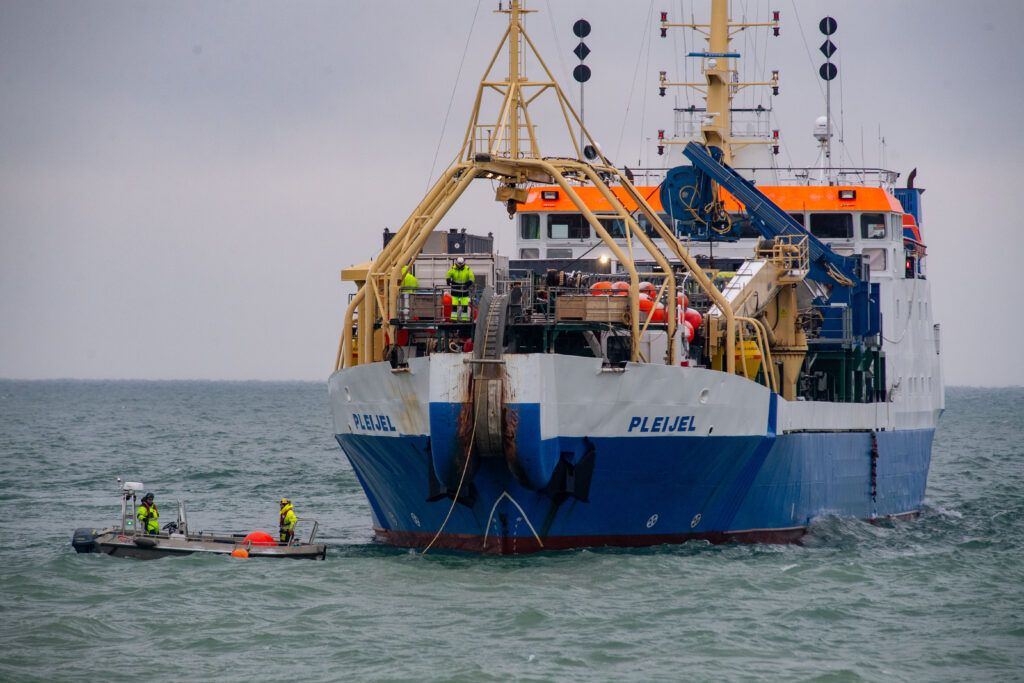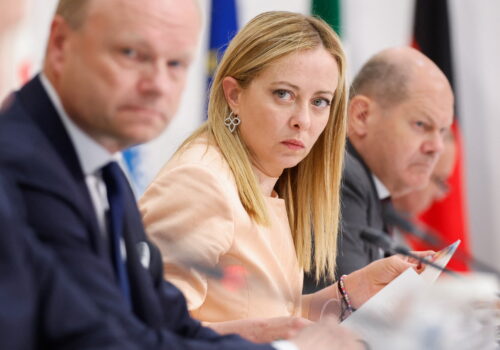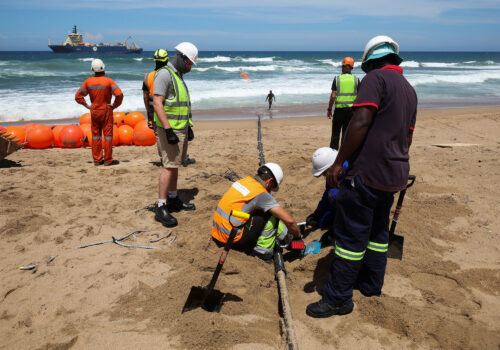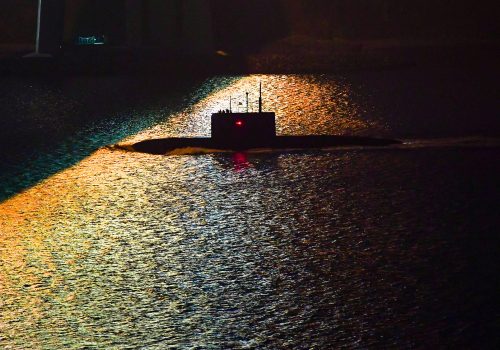In less than two months, Group of Seven (G7) leaders will gather in Italy for their annual summit, where crises in the Middle East and Ukraine are sure to be high on the agenda. But the leaders should make time to forge a common path forward on an urgent global issue that is largely hidden out of sight—undersea cables.
These undersea cables carry over 95 percent of international data traffic, underpinning everything from financial transactions to military operations. Policymakers must address the unique challenges of this domain and develop strategic approaches to protecting it.
Recent incidents highlight the potential dangers. For instance, a Red Sea cable was recently damaged in an incident that remains under investigation, with some reports suggesting deliberate action, while the White House has maintained that it was accidental. However, there’s no doubt about the growing concern surrounding state-sponsored sabotage, criminal activity targeting infrastructure, and the potential for espionage through physical tampering with cables.
China’s significant investments in undersea cable infrastructure as part of its Belt and Road Initiative (BRI) have raised worries about Beijing’s potential dominance and control over global communication networks. As shown by its “Great Firewall,” China does not believe in an open internet. Controlling the means of distribution could help spread this vision further. The India-Middle East-Europe Economic Corridor offers a promising alternative, aiming to strengthen connectivity and trade while establishing robust undersea cable networks that prioritize these crucial aspects.
The Humboldt subsea cable route, connecting Chile to Australia via French Polynesia, demonstrates another significant step toward enhanced global connectivity and diversification of undersea infrastructure. This project, announced by the Chilean government and Google, underscores the importance of fostering partnerships and investments beyond Western powers.
The recent statement of G7 industry, technology, and digital ministers on undersea cables following their meeting in Italy is a positive development. It acknowledges the importance of mapping, monitoring, and investing in next-generation, resilient cables. The ministers committed to “deepen our discussion on supply chain risks for secure undersea cable networks, including maintenance and repair.” However, translating these pronouncements into action requires a concerted global effort.
The West should shape an inclusive coalition specifically designed to safeguard the undersea domain. Such an alliance would foster collaboration among like-minded nations, the private sector, and academia, leveraging expertise and resources to develop advanced monitoring technologies for cable tampering—both underwater and on land. Rapid-response capabilities and international standards for cable security would be crucial. Joint patrols, real-time threat information sharing, and coordinated responses to disruptions or attacks would significantly enhance global situational awareness and resilience.
The Blue-Raman cable system, a partnership between Google and Italy’s Sparkle, serves as a commendable example of successful international cooperation. This project establishes secure cable systems linking Europe, the Middle East, and India. It highlights the importance of cross-border collaboration in safeguarding critical infrastructure while differing from the BRI’s approach by prioritizing transparency and partnership.
The undersea domain is the lifeblood of international data traffic. The global community can ensure the resilience of undersea communication networks by capitalizing on the momentum generated by the G7 ministers statement and using Italy’s presidency of the G7 leaders summit to start the process of forging alliances that prioritize security, transparency, and inclusivity. A secure undersea future is essential for preserving the integrity of the global economy, the trusted flow of information, and the very fabric of today’s interconnected world.
Paolo Messa is a nonresident senior fellow at the Atlantic Council’s Europe Center.
Further reading
Wed, Jan 31, 2024
Italy’s G7 presidency can be a breakthrough for the ‘West’ and the ‘Rest’
New Atlanticist By Paolo Messa, Karim Mezran
Rome is already working on revamping traditional power structures and fostering a new ethos—one that envisions new opportunities for partnership.
Thu, Jan 25, 2024
International law doesn’t adequately protect undersea cables. That must change.
Hybrid Conflict Project By
What's missing: A global effort to protect undersea cables in international waters.
Mon, Jan 31, 2022
Cord-cutting, Russian style: Could the Kremlin sever global internet cables?
New Atlanticist By Justin Sherman
Moscow knows that information is vital in a crisis—and that controlling or entirely disrupting its flow can provide important strategic advantages.
Image: A fiber optic cable is pulled ashore from the cable-laying ship "Pleijel" at the entrance to the port of Sassnitz. After several weather-related delays, an 800-kilometre-long undersea cable from Scandinavia landed in Sassnitz on the island of Rügen on Wednesday. the yellow cable, which is about the thickness of a broomstick, will soon be connected to the GlobalConnect fiber optic network. Including land and sea routes, the cable for the digital high-speed highway is a total of 2600 kilometers long, as GlobalConnect announced. Work began in fall 2021. Stefan Sauer. (c) Copyright, dpa (www.dpa.de) 2023. Alle Rechte vorbehalten.



